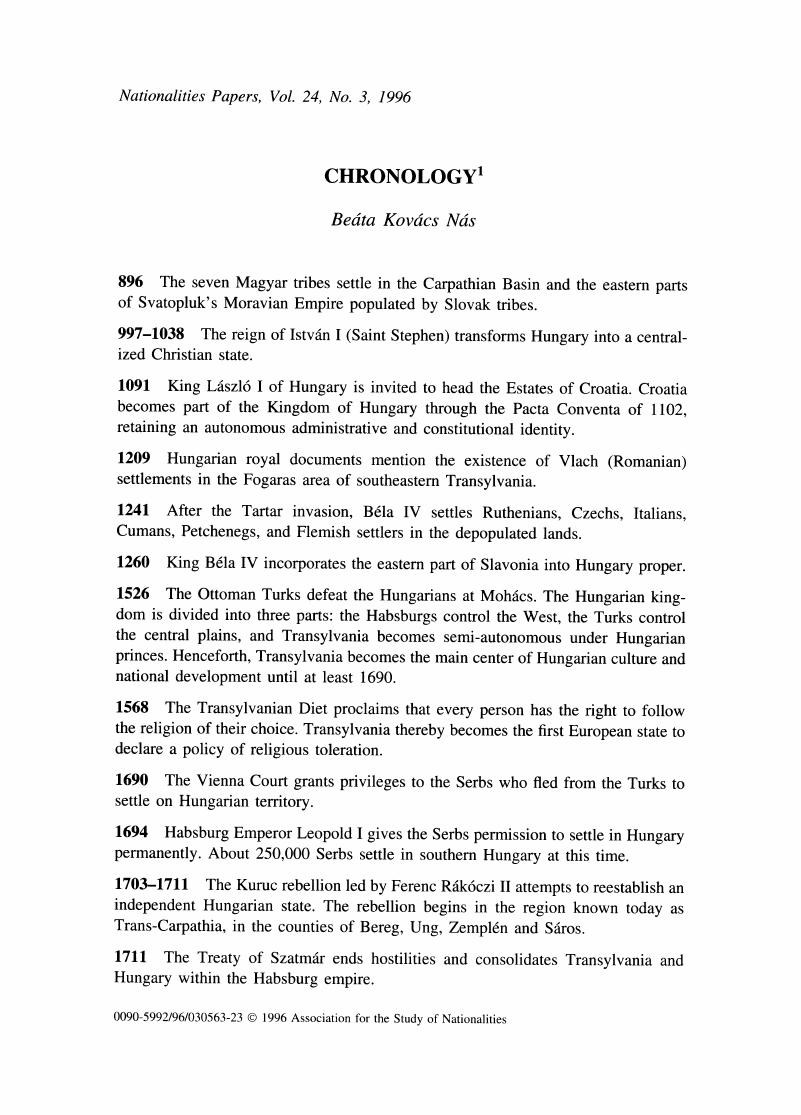No CrossRef data available.
Article contents
Abstract

- Type
- III In Lieu of an Afterword
- Information
- Copyright
- Copyright © 1996 Association for the Study of Nationalities of Eastern Europe and ex-USSR, Inc.
References
Notes
1. This chronology focuses on the recent past through September 1994. With the exception of the Csángó Hungarians of Moldavia, however, the existence of Hungarian “minority” communities in Eastern and Central Europe is a twentieth-century phenomenon. Hungarians were for the most part concentrated within the borders of their own state, or at least in regions that assumed a Hungarian context, whether the Medieval Kingdom of Hungary, the Pashalik of Buda, an independent Transylvania or the Habsburg and Austro-Hungarian Empires. In the following, a brief chronology of the pre-1918 condition of the Hungarians is provided to place their present “minority” status within the context of the successor states. Sources used in this compilation include József Botlik and György Dupka, Ez hát a hon (Uzhgorod: Mandátum-Universum, 1991); Cadzow, Ludányi, Éltetö, eds, Transylvania: The Roots of Ethnic Conflict (Kent, Ohio: Kent State University Press, 1983), pp. 10–36; György Éger, A burgenlandi magyarság rövid története (Budapest: Anonymus, 1991); Sándor Mészáros, “Egy ország széthullásának anatómiája,” Létünk, Vol. 22, No. 2-3, March-June 1992, pp. 151-167; Péter Nahimi, ed., Évkönyv 1992 (Budapest: Interetnica Foundation, 1992); História, Vol. 14, No. 4, 1992; Political Movement for Coexistence, “Az elnyomott kisebbségböl legyen társnemzet,” Political Memorandum, 1992; MTI (Magyar Távirati Iroda); chronology of events compiled by the Government Office for Hungarian Minorities Abroad of the Republic of Hungary.Google Scholar
2. The Sub-Carpathia of the interwar years becomes Trans-Carpathia after its annexation by the Ukrainian SSR.Google Scholar
3. Until October 2 1944, the fate of Hungarians in Trans-Carpathia is summarized in the chronology for Czechoslovakia in the preceding section.Google Scholar


